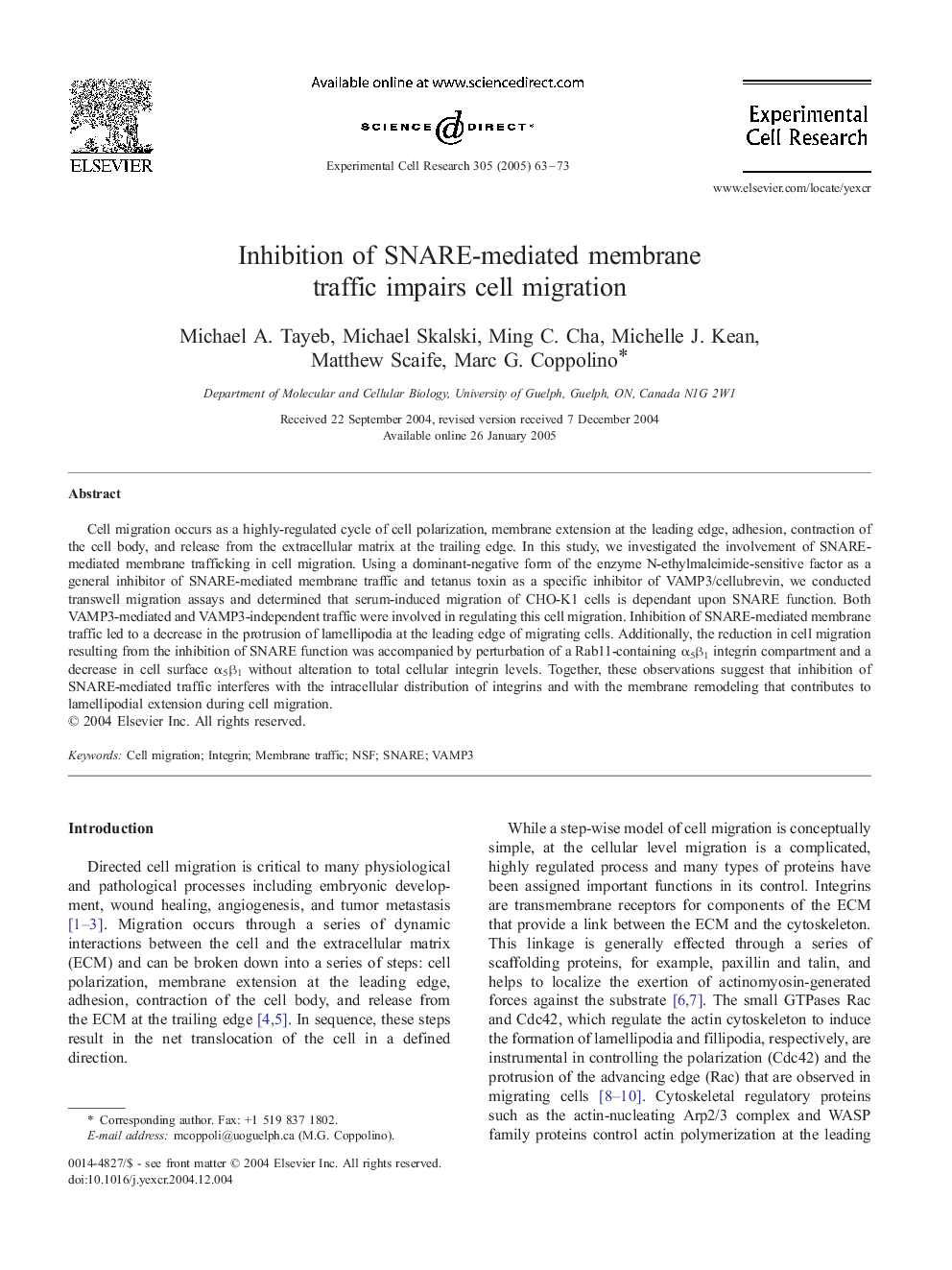| Article ID | Journal | Published Year | Pages | File Type |
|---|---|---|---|---|
| 10905465 | Experimental Cell Research | 2005 | 11 Pages |
Abstract
Cell migration occurs as a highly-regulated cycle of cell polarization, membrane extension at the leading edge, adhesion, contraction of the cell body, and release from the extracellular matrix at the trailing edge. In this study, we investigated the involvement of SNARE-mediated membrane trafficking in cell migration. Using a dominant-negative form of the enzyme N-ethylmaleimide-sensitive factor as a general inhibitor of SNARE-mediated membrane traffic and tetanus toxin as a specific inhibitor of VAMP3/cellubrevin, we conducted transwell migration assays and determined that serum-induced migration of CHO-K1 cells is dependant upon SNARE function. Both VAMP3-mediated and VAMP3-independent traffic were involved in regulating this cell migration. Inhibition of SNARE-mediated membrane traffic led to a decrease in the protrusion of lamellipodia at the leading edge of migrating cells. Additionally, the reduction in cell migration resulting from the inhibition of SNARE function was accompanied by perturbation of a Rab11-containing α5β1 integrin compartment and a decrease in cell surface α5β1 without alteration to total cellular integrin levels. Together, these observations suggest that inhibition of SNARE-mediated traffic interferes with the intracellular distribution of integrins and with the membrane remodeling that contributes to lamellipodial extension during cell migration.
Related Topics
Life Sciences
Biochemistry, Genetics and Molecular Biology
Cancer Research
Authors
Michael A. Tayeb, Michael Skalski, Ming C. Cha, Michelle J. Kean, Matthew Scaife, Marc G. Coppolino,
